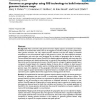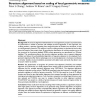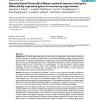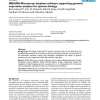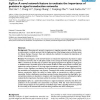BMCBI
2006
13 years 11 months ago
2006
Background: Many commonly used genome browsers display sequence annotations and related attributes as horizontal data tracks that can be toggled on and off according to user prefe...
BMCBI
2006
13 years 11 months ago
2006
Background: Cellular metabolism can be characterized by networks of enzymatic reactions and transport processes capable of supporting cellular life. Our aim is to find evolutionar...
BMCBI
2006
13 years 11 months ago
2006
Background: A structure alignment method based on a local geometric property is presented and its performance is tested in pairwise and multiple structure alignments. In this appr...
BMCBI
2006
13 years 11 months ago
2006
Background: Multiple sequence alignment is the foundation of many important applications in bioinformatics that aim at detecting functionally important regions, predicting protein...
BMCBI
2006
13 years 11 months ago
2006
Background: The small sample sizes often used for microarray experiments result in poor estimates of variance if each gene is considered independently. Yet accurately estimating v...
BMCBI
2006
13 years 11 months ago
2006
BMCBI
2006
13 years 11 months ago
2006
Background: The biological information in genomic expression data can be understood, and computationally extracted, in the context of systems of interacting molecules. The automat...
BMCBI
2006
13 years 11 months ago
2006
Background: Measuring each protein's importance in signaling networks helps to identify the crucial proteins in a cellular process, find the fragile portion of the biology sy...
BMCBI
2006
13 years 11 months ago
2006
Background: Gene expression profiling using microarrays has become an important genetic tool. Spotted arrays prepared in academic labs have the advantage of low cost and high desi...
BMCBI
2006
13 years 11 months ago
2006
Background: Frequently, several alternative names are in use for biological objects such as genes and proteins. Applications like manual literature search, automated text-mining, ...
